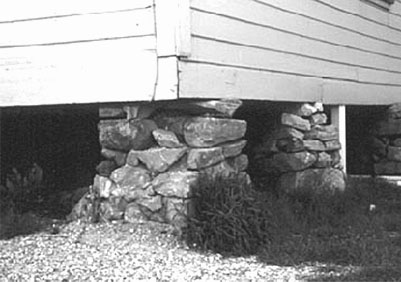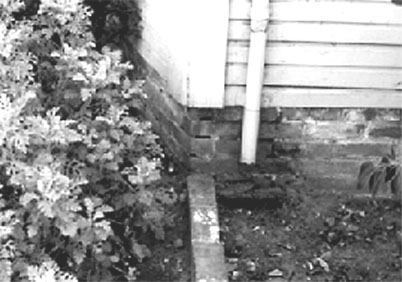The Seven Steps
Unreinforced Masonry Foundations
The Problem

This is an unreinforced stone foundation. They typically fail during earthquakes.
Source: California Seismic Safety Commission
Unreinforced masonry—brick, concrete block, or stone—foundations often cannot resist earthquake shaking. They may break apart, or be too weak to hold anchor bolts. Homes may shift off such foundations during earthquakes, damaging the walls, floors, utility lines, and home contents.
How to Identify

Note the bricks exposed in this unreinforced masonry foundation.
Source: California Seismic Safety Commission
- If your home’s foundation is brick or stone, and looks like one of the foundations shown in the photos here, it is probably unreinforced.
- If there is a space filled with grout between the inner and outer faces of a brick foundation (where anchor bolts and reinforcing steel could be installed), it may be reinforced.
- If the outside of the foundation is covered, you may have to look under the house to see the type of foundation you have.
- If you are not sure what to look for, seek the services of a licensed engineer to determine if your foundation is reinforced or not.
Remember
- It is cheaper to do this before an earthquake damages the house than after.
The Solution
There are several ways to fix this problem.
The most common approach is to replace all or part of the existing foundation with a poured reinforced concrete foundation.
Another solution is strengthening the unreinforced brick or stone foundation, which is generally expensive.
Seek the help of a licensed architect or engineer, and a licensed foundation contractor or general contractor.
Source: California Seismic Safety Commission
How-to Resource
- Detailed information for engineers can be found in the International Existing Building Code, published by the International Code Council.





